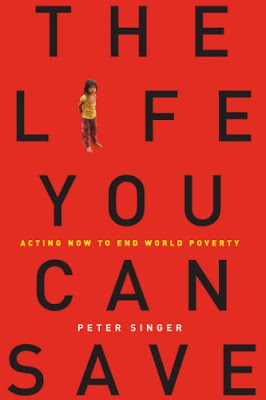Two toddlers (roughly ages four and five)with visible signs of kwashiorkor--when normally dark human hair turns red or blonde due to protein deficiency and malnutrition. Much of the diet here consists of carbohydrates like coos and rice and some protein from peanut sauce. But little value or effort is given to incorporate vitamin-rich vegetables or fruit into the daily diet. This results is stunted growth and impeded cognitive development.
A chronically malnourished 8-year old boy--bedridden from swollen joints and weak--whose parents believe he will get better over time rather than take him to the health clinic a few minute's walk away. If you put your hand around his arm, you can touch your thumb with your index finger. Despite being urged to take their son to get tested for sickle cell, the parents don't act. Yesterday, Omar's uncle and I planted three beds of moringa to supplement his health. Moringa leaves are packed with vitamins and nutrients, and we're hoping the dried and pounded leaves can give Omar much needed sustenance and energy.
A sixteen-year-old 8th grade girl whose violent epileptic seizures--up to three or four episodes a day--were interpreted as manifestations of evil spirits. Her mother had her taken to a marabout or local witch doctor for traditional medicine after a community health nurse advised her to do so. Since her first seizure happened while at school almost a year ago, many believe that it is a result of her going to school and catching the affliction there. Afraid of her having an attack in class, her guardians have kept her from attending regularly for months. However, after getting a second medical opinion, she is now taking daily medication to control (it cannot be cured) the epilepsy and will return to school for the next term starting in a week or two. Without the medication she can risk neurological injury. Many girls in the area have similar episodes, and education campaigns are needed inform communities that epilepsy can be caused not by black magic, but by pressure placed on the head of an infant by the narrow birth canals of young mothers during the birthing process. Another reason to wait a few years before having children.
A girl whose had ringworm and fungus on her body for more than a month who cannot get treatment because the health center has run out of medicine. Luckily, I packed some clotrimazole in my first aid kit.
I've been filling the role of acting nurse, treating the more common skin infections in the village. "Chuputo" are small, contagious boils that form on the head and other parts of the body that burst. They appear mostly on children who do not shower properly or not enough, mostly the small boys. Examples include not using adequate soap or enough water, or not drying off completely before putting their clothes back on. Repeatedly wearing the same dirty clothes for consecutive days doesn't help. In the next few weeks, I'm going to try to make antibacterial soap out of neem leaves and oil so we won't have to buy medicated soap.
Some of the other projects I've been pursuing include making a prototype rocket stove, a bearing press to make briquettes from field waste (to reduce reliance on trees for fuelwood), and growing trees. We just planted some Surinam Cherry and sweetsop, and will start leucena seedlings soon for a woodlot. Most importantly, I'm happy to see that Jaye, my counterpart during my Peace Corps service, has continued to care for his tree nursery. His mangoes, tamarinds, and pigeon peas are doing well. He has quite a bit of oranges going as well. Many of the gmelina stumps and moringas we planted last year died because of the poor rains and termites, but all in all, his tree nursery is coming along, and we look to outplant some tamarinds soon. We got some barb wire and plant to make woodlot fencing and a women's garden soon.
But growing things hasn't been an easy task with a handpump. Water is the village's biggest problem. The handpump breaks once in a while and trees and crops have withered away while waiting for a well technician to arrive. Even when in working order, manually pumping to draw water from 30 meters deep or lower is a difficult, tiring job for man, woman, and child (but 99% of the time left to the latter two). It'd be ideal to have a solar pump at every village, but many would do with working handpumps. Many Mark II pumps were installed by various NGOs in the past 20 years, but most have fallen into disrepair or are badly in need of servicing. Cylinder seals and handle bearings have worn away. Chains need greasing. The money for maintenance and technical expertise to properly repair wells are lacking. With the help of Water Charity I picked up parts to fix three pumps in Niamina West and Niamina Dankunku today.
Till next time.
Pictures:
1. Tree nursery we started--mangoes, mahogany, tamarind, orange, cashew, gmelina
2. Sohna and Maimai in front of sisal (for live fences) and oranges. Sohna has red and blonde tints on her hair, a sign of kwashiorkor, or protein deficiency malnutrition.
3. Rocket stove prototype





